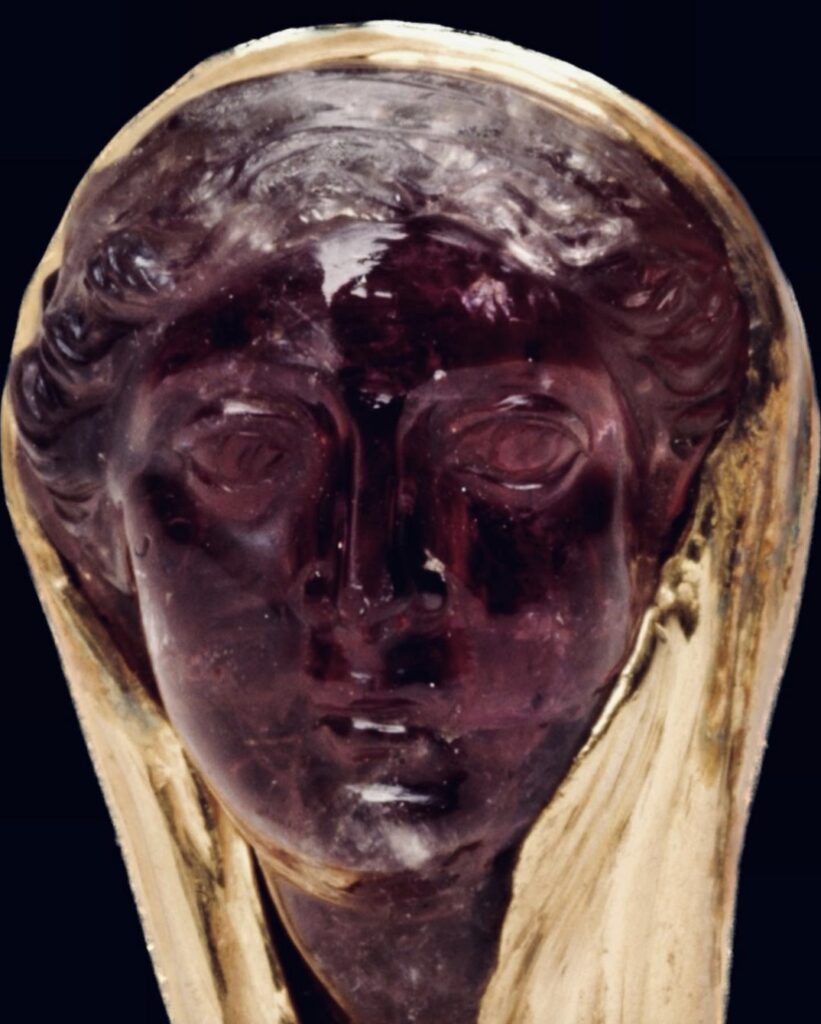Semi-precious stone, gold, miniature portraiture, and the incomparable queen Arsinöe II: this head (H. 2.2 cm) in the Walters Art Museum has it all in one tiny package!
The stone is amethyst, which is a fun one. Not only did it have royal connotations in Egypt for several thousand years prior to this portrait, the name derives from the Greek μεθύσκω (drunkenness), with the α at the front (the lovely alpha privative) meaning more specifically that it embodied the opposite of drunkenness, even warding it off.
The portrait itself is masterfully carved in the round, with the small mouth, slightly weak chin, and those extraordinarily large eyes (here attractive, rather than the potentially alarming thyroid condition that dogged future generations of Ptolemies), all strongly reminiscent of the queens portraits on coins. Her hair is parted centrally, above it the royal diadem, all topped off by the golden veil – an indication of her piety also found on coin portraits.

The style is thoroughly Greek for this Egyptian queen, who was arguably the most powerful of the Hellenistic period (with the possible exception of her descendent Kleopatra VII). Arsinöe, who had been used as a pawn in dynastic royal marriages for most of her early adulthood, developed a ruthless streak and dispatched her husbands and rivals (as well as her children’s rivals) in various ways until she married her brother Ptolemy II to become queen of Egypt. Her chin was the only remotely weak thing about her!
Delectably feminine and luxurious, it has been suggested that this might have served as a forehead jewel…a tantalizing image in itself, no?




